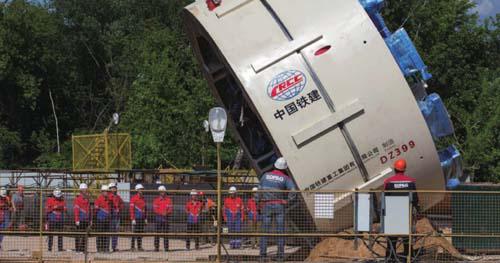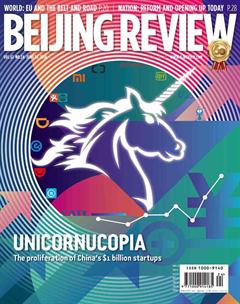Reaching for the Moon
By Lu Yan
Trade volume between China and Russia is expected to reach or exceed $100 billion this year, according to Chinas Ministry of Commerce, as the country continues to be Russias largest trading partner for the eighth consecutive year. Bilateral trade totaled over $84 billion in 2017, up 20.8 percent year on year and Chinas direct investment in Russia surged 72 percent to reach $2.22 billion last year.
Despite the rapidly growing economic relationship, both Chinese and Russian scholars claimed that there was huge potential that could be further tapped for bilateral economic cooperation. At the China-Russia Think-Tank Forum held in Beijing on May 29-30, scholars from both countries expounded on the deepening bilateral relations.
“The bilateral trade scale is still far from enough. To fully tap the huge potential for further economic and trade cooperation, the two countries need to overcome some barriers ahead,” Li Xin, head of the Center for Russian and Central Asian Studies of Shanghai Institutes for International Studies, said at the event.
Room for growth
The two-day forum, which has attracted over 300 attendees, was jointly held by the Chinese Academy of Social Sciences and the Russian International Affairs Council. Experts from political, academic and business circles from both countries expressed their opinions on current China-Russia economic and trade relations and areas that the two countries can further explore.
During a panel discussion on China-Russia economic relations, Li pointed out that bilateral trade has been adversely affected by the international price of oil and external factors.“It is mostly because of the goods structure of Russias foreign trade,” Li said.
He added that Chinas trade surplus with Russia is also a challenge. Russias exports are mainly crude oil, raw materials and wood products, while 60 percent of Chinas exports are mostly textiles, mechanical and electrical products. The value of Chinas exports to Russia is higher, which has led to a trade surplus for China.
Yevgeny Nadorshin, chief economist at PF Capital in Moscow, noted that the economic and trade exchanges between China and Russia could go further. Although the Chinese Government and especially state-owned companies have provided strong support to Russias industrial development, direct investment from China is small compared to the entire economic volume of the two countries.
“Both China and Russia are undergoing a period of economic transformation and facing uncertainties. We should share our technologies and experiences,” Nadorshin said. For instance, China is a big light-industry production country with a complete manufacturing system, which is lacking in Russia. On the other hand, Russia can offer its technologies in fields like nuclear energy and aerospace. “Unfortunately such exchanges are rarely seen between our countries,” he said.
Skys the limit
In recent years, new developments have emerged between the two countries that point to a great future potential. Agricultural products and e-commerce trade have grown quickly, leading to the signing of a memorandum of understanding last year on furthering cooperation in agriculture, deepening practical cooperation in agricultural science and technology, investment and trade, animal health, plant disease and pest control. According to Li, on account of the China-U.S. trade friction, China may further increase imports from Russia.
“In the future, we should promote the connection between the Belt and Road Initiative and the Eurasian Economic Union (EAEU) and facilitate trade and investment. We have already signed comprehensive economic and trade deals, and we expect more,” Li said.
On May 17, the EAEU signed an agreement on trade and economic cooperation with China, the fi rst major systemic arrangement between the two sides, where it was agreed to further simplify procedures for customs clearance and cut costs for trade in goods by strengthening cooperation and exchange of information.
Li suggested that as two major market economies, China and Russia should prevent their companies from being pressured by political factors. Instead, they should respect the rule of the market and raise the share of high valueadded products in bilateral trade and further explore cooperation in infrastructure and high technology.
Victor Lavrentyevich Larin, head of the Institute of History, Archaeology and Ethnography of the Peoples of the Far-East under the Russian Academy of Science, suggested that the maritime economy can be a new growth point for China-Russia bilateral trade.
Li concluded by emphasizing, “Theres one important aspect we should not ignore. Companies from both countries should increase mutual trust and reduce misunderstanding through people-to-people exchanges.”

